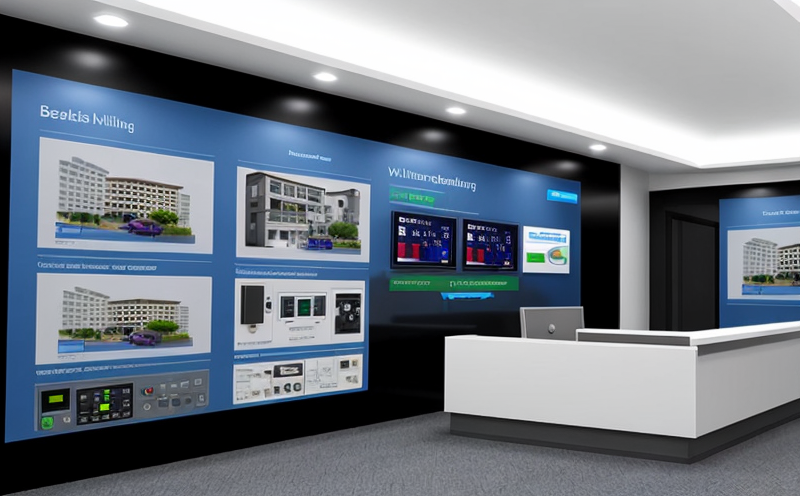ISO 16484-9 Testing of Sensors and Actuators
The ISO 16484 series of standards is pivotal in ensuring that building automation systems (BAS) are designed, installed, operated, and maintained to meet specific performance requirements. This standard sets out the testing procedures for sensors and actuators within BAS, which are critical components for monitoring and controlling environmental conditions such as temperature, humidity, lighting, and ventilation.
The testing of these components under ISO 16484-9 ensures that they function accurately and reliably in real-world scenarios. This is achieved through a series of rigorous tests aimed at evaluating the performance characteristics of the devices. These include but are not limited to accuracy, repeatability, hysteresis, response time, and stability. The standard also emphasizes the importance of these sensors and actuators being capable of operating under various environmental conditions.
The testing process involves several steps, each designed to assess different aspects of the sensor or actuator's performance. Specimen preparation is crucial; it involves selecting samples that are representative of the expected operational environment and ensuring they are clean and free from any contaminants that could affect test results. Instrumentation used in these tests includes calibrated measurement devices capable of capturing precise data points.
The acceptance criteria for passing ISO 16484-9 testing are stringent, designed to ensure high levels of reliability and accuracy. These criteria vary depending on the specific type of sensor or actuator being tested but generally include a requirement for minimal error margins in measurements taken over time and under varying conditions.
Compliance with this standard is essential for quality managers, compliance officers, R&D engineers, and procurement teams working in the building and infrastructure sector. By adhering to these standards, organizations can ensure that their BAS components operate efficiently and effectively, contributing significantly to energy savings and improved occupant comfort. The tests conducted under ISO 16484-9 play a vital role in maintaining the integrity of the entire building automation system.
For example, consider an HVAC system where sensors are used to monitor air quality. If these sensors do not perform accurately or consistently, it can lead to poor indoor air quality, increased energy consumption, and discomfort for occupants. ISO 16484-9 testing helps prevent such issues by ensuring that the sensors and actuators in place meet strict performance standards.
Another example is in smart lighting systems where actuators control the intensity of lights based on occupancy levels or natural light availability. Properly functioning actuators are crucial for achieving energy efficiency goals while enhancing user experience. ISO 16484-9 testing ensures that these devices operate as intended, thereby supporting sustainable building practices.
In summary, compliance with ISO 16484-9 is not just about meeting regulatory requirements; it's also about ensuring the quality and reliability of BAS components which contribute to creating healthier, more efficient buildings. This standard provides a framework for testing that guarantees accuracy, repeatability, and stability in sensor and actuator performance.
Applied Standards
The ISO 16484 series of standards is widely recognized as the benchmark for building automation systems (BAS). Among these, ISO 16484-9 specifically addresses the testing of sensors and actuators within BAS. This standard is integral to ensuring that the components used in these systems function accurately and reliably.
The application of ISO 16484-9 is extensive, covering various aspects of sensor and actuator performance including accuracy, repeatability, hysteresis, response time, stability, and environmental adaptability. These parameters are critical for maintaining the overall efficiency and effectiveness of BAS components.
Industry Applications
| Application Area | Description |
|---|---|
| HVAC Systems | Sensors monitor and control temperature, humidity, and ventilation. |
| Smart Lighting | Actuators adjust lighting based on occupancy levels or natural light availability. |
| Fire Safety Systems | Sensors detect smoke, heat, and other fire indicators to activate safety protocols. |
| Security Systems | Actuators control access points in response to security breaches or authorized entries. |
| Energy Management | Systems that optimize energy use by adjusting HVAC settings based on occupancy patterns. |
- HVAC Systems: Ensures comfort and efficiency through precise monitoring of environmental factors.
- Smart Lighting: Enhances user experience while reducing energy consumption.
- Fire Safety Systems: Protects occupants by ensuring quick response to fire hazards.
- Security Systems: Improves safety by enhancing access control mechanisms.
- Energy Management: Contributes to sustainability efforts by optimizing resource use.
The applications of ISO 16484-9 testing are broad, spanning multiple sectors within the building and infrastructure domain. These tests ensure that sensors and actuators perform as expected under real-world conditions, supporting the overall reliability and efficiency of building automation systems.
Why Choose This Test
- Ensures compliance with international standards, enhancing the credibility of your products or services.
- Improves the accuracy and reliability of sensors and actuators used in building automation systems.
- Promotes energy efficiency by ensuring that BAS components operate optimally under various conditions.
- Aids in the prevention of potential issues such as poor indoor air quality, high energy consumption, and discomfort for occupants.
- Supports sustainable building practices through accurate and reliable performance metrics.
- Facilitates easier integration with other BAS components by ensuring consistent performance across all devices.
Selecting ISO 16484-9 testing for your sensors and actuators ensures that they meet the highest industry standards, contributing to a safer, more efficient, and sustainable built environment. This test is particularly beneficial for those focused on enhancing the functionality of their BAS components while adhering to stringent international guidelines.





